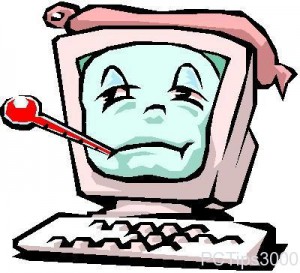How to Speed up Your PC, part I
Even if you have the best hardware components available you’ll complain about your PC being slow and you will not ever feel satisfied about your computer's speed. By following this article's tweaks you'll be able to increase your computer's speed and make sure it works efficiently.
Note: This article's steps are based on Windows XP the steps may differ slightly on other operating systems.
Hack 1: Indexing Service
Windows 7/Vista/XP contains a service called “Indexing Service” this service speeds up Searching for files and folders. Indexing works in the system background eating your RAM and slowing down your system. I prefer to disable this service let’s see how it's done shall we?
Step 1: Start -> Control Panel -> “Add/Remove Programs” .
Step 2: Select “Add/Remove Windows components” on Windows XP or "Turn windows features on or off" on Windows 7 and Vista.
Step 3: Uncheck “Indexing Service” click “Next” and then restart your computer.
Hack 2: Automatically search for network folders
Have you noticed the delay which happens every time you open “My Computer”? This frustration is caused by a service in Windows which searches for shared folders and printers before opening the “My Computer” window. If you don’t use shared folders or shared printer you can disable this service here's how.
Step 1: Open “My Computer”.
Step 2: Click on “Tools” in the tools bar then select “Folder Option”.
Step 3: From “Folder Option” open “View” tab.
Step 4: Uncheck “Automatically search for network folders and printers” .
Step 5: Click “OK”.
Hack 3: Disable some of visual effects
Windows 7/Vista/XP contain a huge amount of visual effects which make Windows looks pretty but it slows down your system. If you had the choice between looks and speed you'd pick speed. To speed the system up we can disable some visual effects.
Step 1: Right click on the “My Computer” icon and select “Properties”.
Step 2: Click on “Advanced” tab -> performance “Settings”.
Step 3: You can customize the visual effect simply by unchecking the useless effects here are some of them:
- Show shadows under menus.
- Show shadows under mouse pointer.
- Show translucent selection rectangle.
- Use drop shadows for icon labels on the desktop.
- Use visual style on windows and buttons.
Or you can simply choose “Adjust for best performance” and most of the visual effects will be disabled.
Step 4: Don’t forget to click “OK”.
That’s it for now but don’t worry we'll continue speeding up your computer in part II.
